
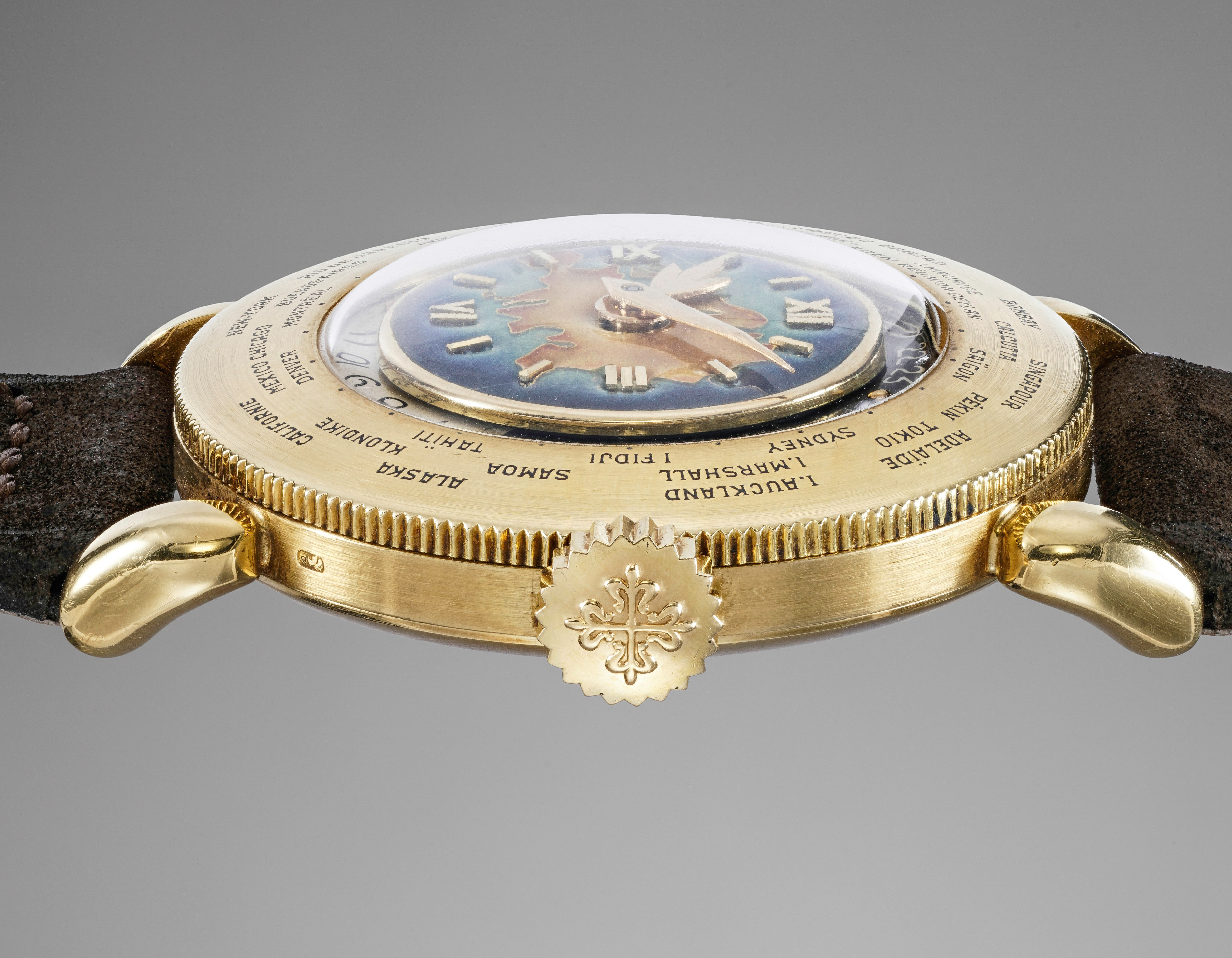
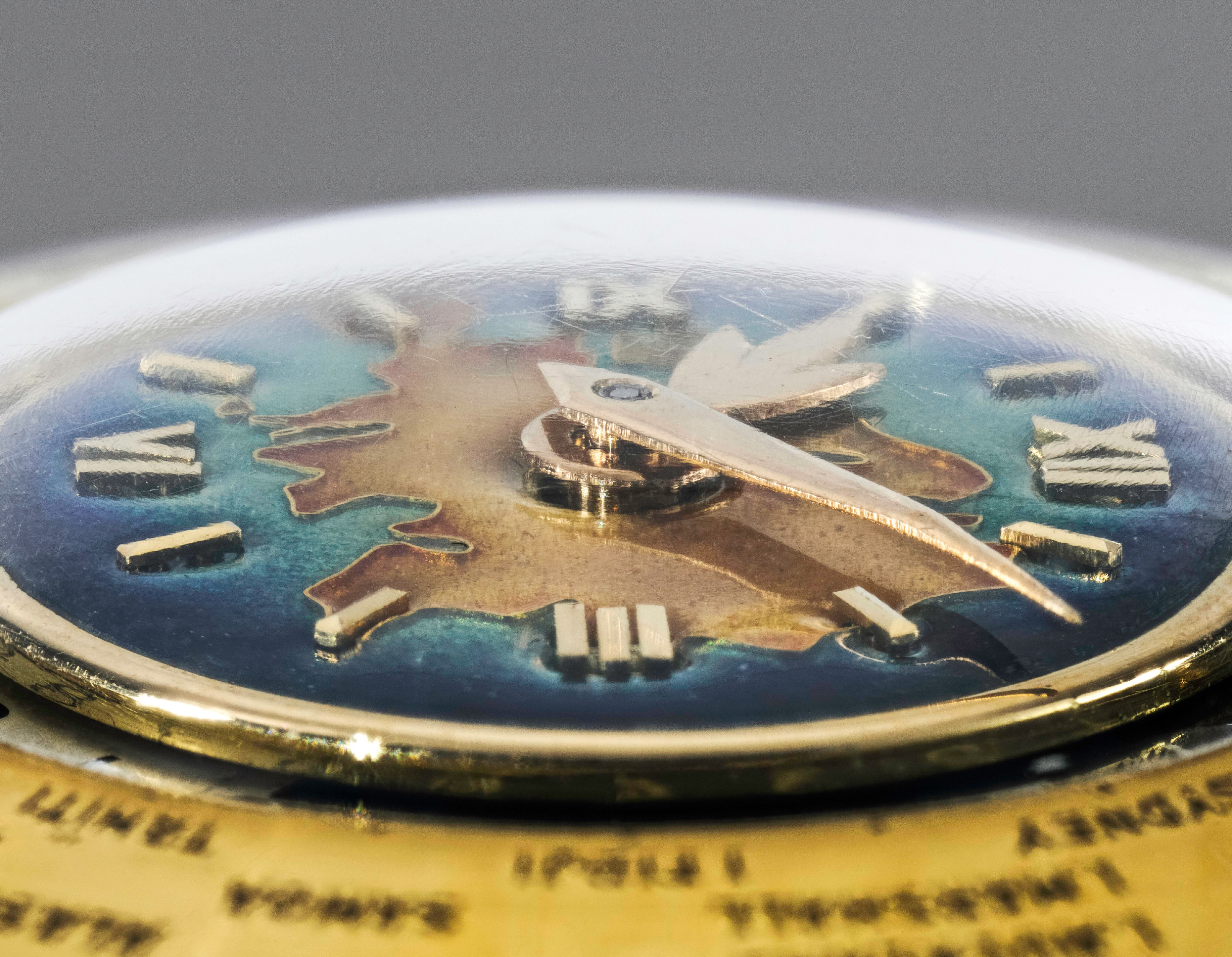

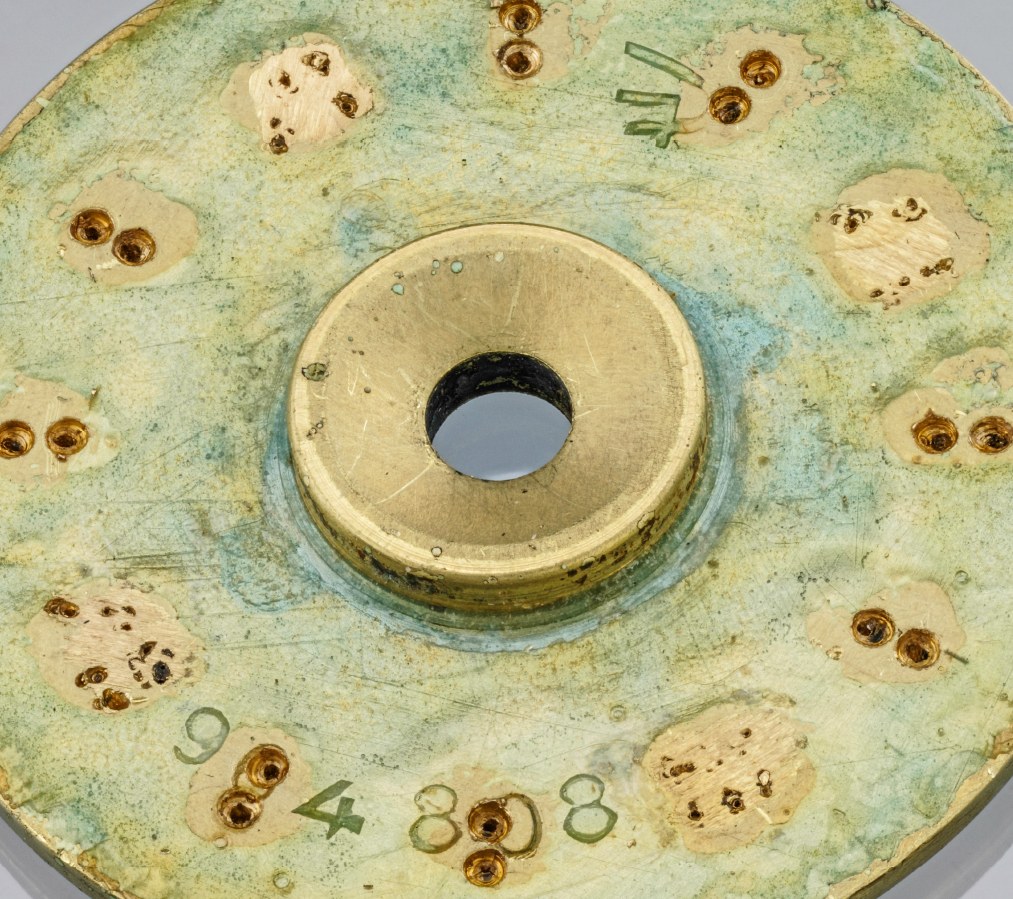
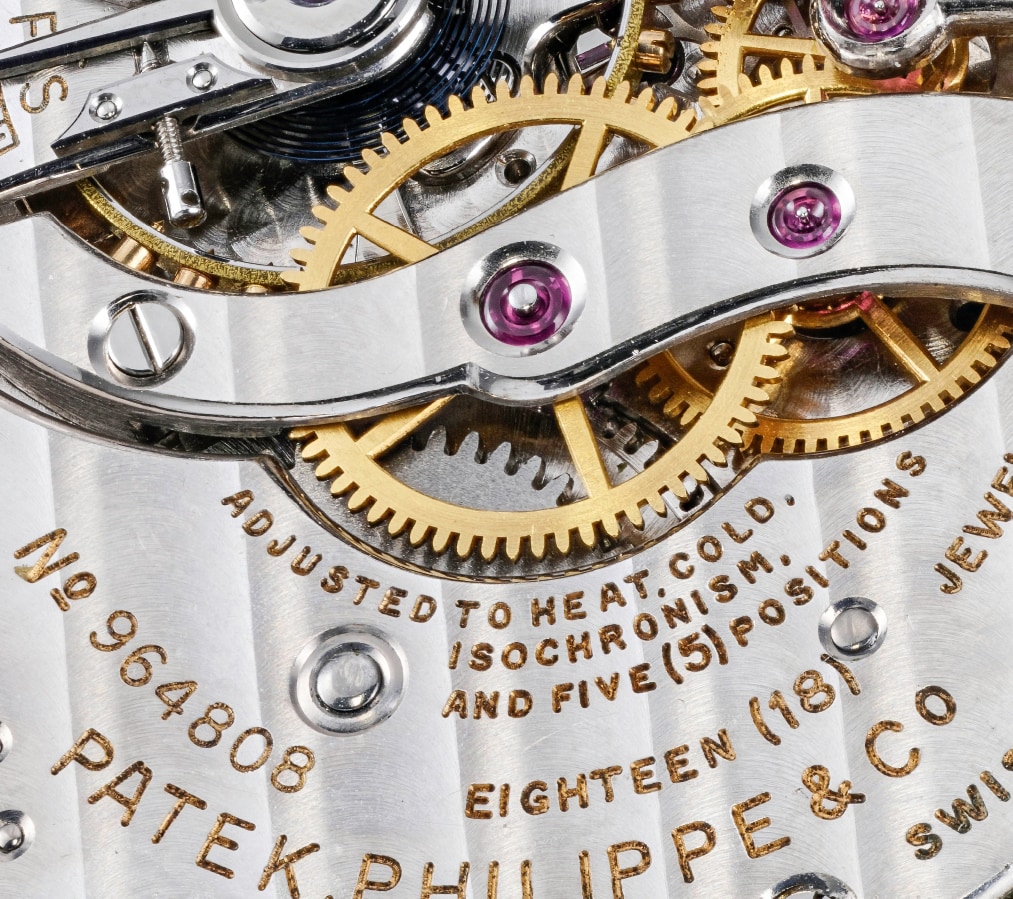

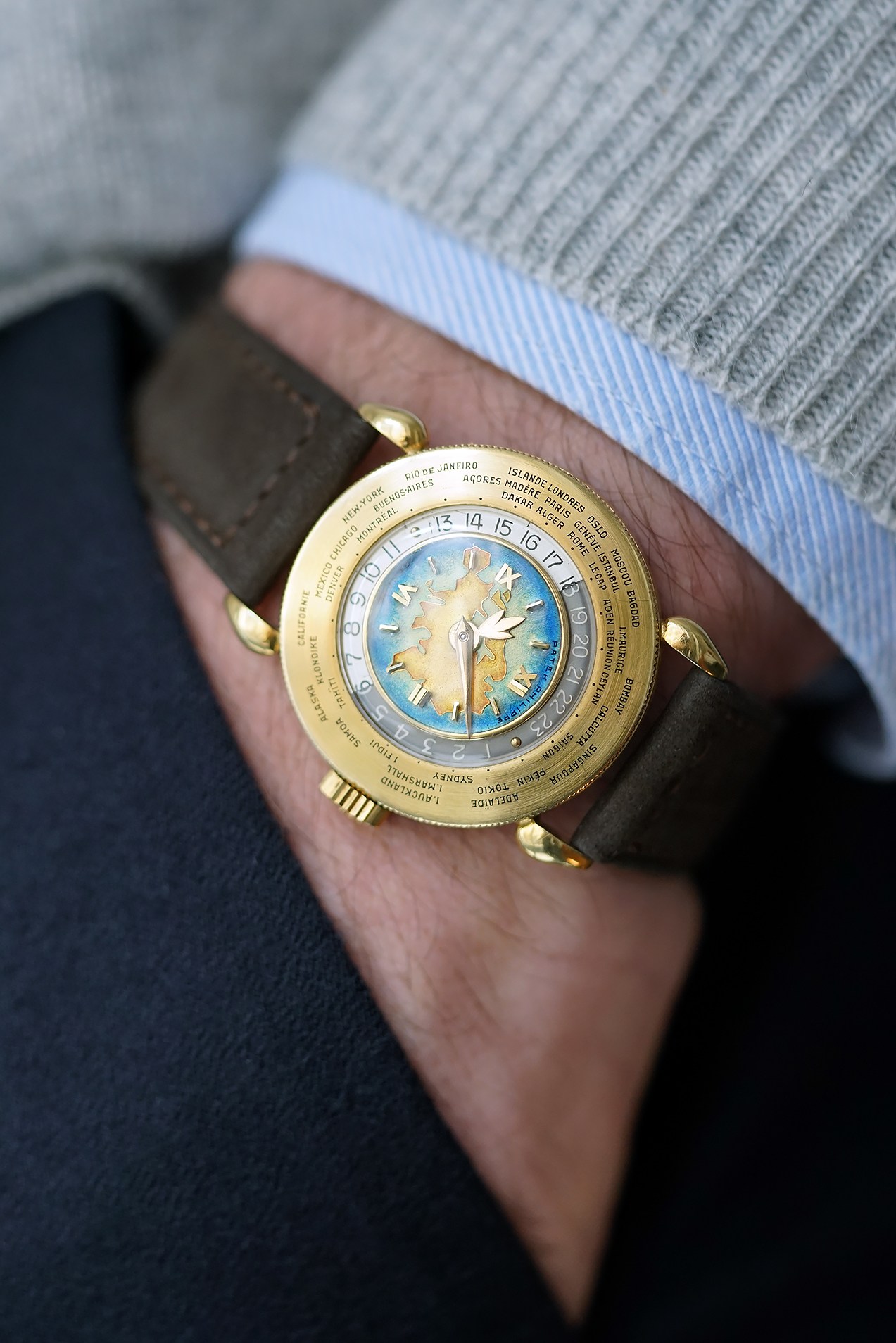








268
Patek Philippe
Ref. 1415
"Eurasia"
An exceptionally fine, important and attractive yellow gold world time wristwatch with "Eurasia" polychrome cloisonné enamel dial
Full-Cataloguing
When it comes to Patek Philippe, in the eyes of the collectors the world time complication - especially when associated with a cloisonné dial - is indisputably one of the “hallmarks” of the brand. This is not because Patek Philippe has some sort of monopoly on this complication; on the contrary, many contemporary and vintage timepieces sport the feature. However, no world time watch of any other brand has ever evoked such strong feelings in the collecting community: while the current production enameled world time pieces are virtually unobtainable unless the collector is more than well known to the company, vintage timepieces are considered absolute endgame wristwatches, among the highest pinnacles achievable in the field.
The reasons behind such an endless fascination of the community with Patek Philippe world time pieces are most probably multiple, and definitely arguable but what is certain is that it all began in the 1940s, with the commercialization of the present reference 1415. Patek Philippe has since then almost continuously offered a world or travel time (another complication developed by Cottier for Patek Philippe) in its catalogues.
In the early years of the twentieth century, telecommunications - pioneered in the 1800s with the telegraph and later the telephone - became a truly widespread occurrence, permeating the fabric of society on every level. Long distance communications became available (the first coast-to-coast phone call having been made in 1915) and with them the necessity of knowing with accuracy the time in every part of the world. Answering to this need, watchmaker Louis Cottier created the concentric rings system that would become the standard for world time watches. After experimenting on a few prototypes (such as a world time chronograph and a rectangular world time wristwatch), Patek Philippe decided to launch a serially produced model, the reference 1415. Created in yellow gold, pink gold, and one known example in platinum, the overall production for the model is a highly restricted 115 pieces in total. Of these, only a tiny minority was blessed with stunning cloisonné dials representing either the map of the world, or - much less commonly - the map of Eurasia.
By filling with enamel powder of various colors compartments (cloisons) created with gold wires, enamel masters managed to achieve dials of incredible chromatic range, astounding brilliance, and mesmerizing depth. In fact, vintage cloisonné dials are considered by purists superior in translucency and overall aesthetic impact to modern creations.
The present example of reference 1415 is an extremely important specimen preserved in astounding condition, with absolutely crisp hallmarks to the case and an immaculate polychrome cloisonné enamel dial.
Furthermore, not only it is one of the 115 examples of this reference made but even more appealing is the fact that it is one of the extremely scarce cloisonné dial variations. While most of the known cloisonné reference 1415 feature a world map, only two pieces, including this one, are known with the map of Eurasia (the other being one number apart: 964’809). Furthermore, it features a bezel engraved with the cities in French, much more rare than the version in English. It is interesting to note how the bezel reports Paris and London on the same time zone. While France adopted Central European time in July 1940, for many years it was expected to revert back, and so many watchmakers kept it within the London time zone for years. There are examples of Patek Philippe pieces from the 1970s which still feature London and Paris in the same zone.
Patek Philippe
Swiss | 1839Since its founding in 1839, this famous Geneva-based firm has been surprising its clientele with superbly crafted timepieces fitted with watchmaking's most prestigious complications. Traditional and conservative designs are found across Patek Philippe's watches made throughout their history — the utmost in understated elegance.
Well-known for the Graves Supercomplication — a highly complicated pocket watch that was the world’s most complicated watch for 50 years — this family-owned brand has earned a reputation of excellence around the world. Patek's complicated vintage watches hold the highest number of world records for results achieved at auction compared with any other brand. For collectors, key models include the reference 1518, the world's first serially produced perpetual calendar chronograph, and its successor, the reference 2499. Other famous models include perpetual calendars such as the ref. 1526, ref. 3448 and 3450, chronographs such as the reference 130, 530 and 1463, as well as reference 1436 and 1563 split seconds chronographs. Patek is also well-known for their classically styled, time-only "Calatrava" dress watches, and the "Nautilus," an iconic luxury sports watch first introduced in 1976 as the reference 3700 that is still in production today.